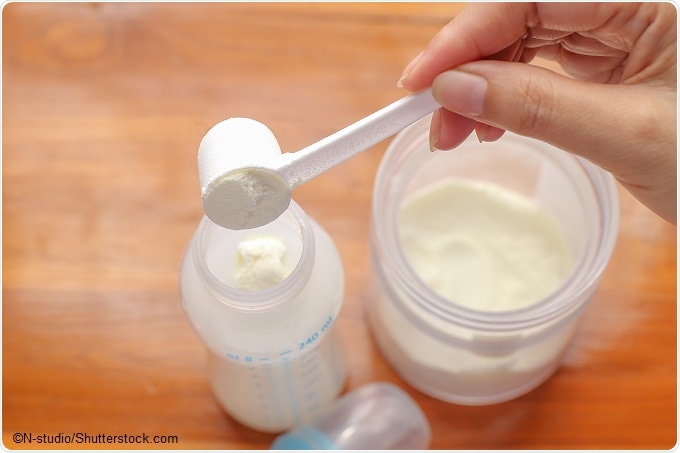Jul 3 2017
The study commissioned by Friends of the Earth (FoE) has found that six out of six infant formula samples tested contained nanoparticles, which are believed by FoE to be harmful. However the potential health risks of nanoparticles are disputed by others, who claim there is insufficient evidence to support this.
The study by FoE proved the presence of both needle-like form—nano-hydroxyapatite (nano HA) and non-needle-like form—nano titanium dioxide (TiO2) and nanosilicon dioxide (SiO2) in popular baby formula products.

Following a recent study, the European Commission’s Scientific Committee on Consumer Safety has suggested the prohibition of needle-like forms for usage in toothpaste and mouthwash and Jeremy Tager, spokesman, FoE, therefore questions their presence in infant food. He explained, "Babies are particularly vulnerable to food safety risks since their immune systems are still developing and often infant formula is the only food an infant receives."
The report “Nanoparticles in Baby Formula: Tiny new ingredients are a big concern” is the first of its kind, compiled data from independent health studies that are impacted by nanoparticles. Lead report author, Ian Illuminato, health and environment campaigner with FoE said: “This technology is moving from the lab to the marketplace without sufficient regulation, safety assessment and labeling.”
The environmental group FoE has commissioned independent researchers for the study, which includes studies that reveal damage to the liver and kidneys in rats caused by nanoparticles. Yet the study did not present any new proof that demonstrates the harm it can do for infant health and safety, says the Food Standards Australia and New Zealand (FSANZ), which depends on the information supplied by experts from Scientific Nanotechnology Advisory Group.
Andrew Bartholomaeus, Adjunct Professor, consultant toxicologist, University of Canberra and the University of Queensland said there is no evidence to point out that the nanodimensions of particulates pose a threat to health in humans.
He added: “Nano particulate materials form naturally in the gut due to the action of the intestinal microbiome and the commercial production of some nanoparticulate metals utilises this process. Consequently, small quantities of nanoparticulates are a normal aspect of the human diet and present no basis for concern.”
Dr Ian Musgrave, Senior Lecturer, Faculty of Medicine, School of Medicine Sciences, Discipline of Pharmacology, University of Adelaide, said that it is not surprising to find hydroxyapatite in dried milk powder (dried infant formula).
He commented: “The health effects of hydroxyapatite nanoparticles have been studied in animals with no toxicity at levels well above those present in milk. There are no significant public health implications for the finding small crystals of naturally occurring calcium phosphates in milk-based products."
A statement issued by FSANZ said that consumption of nanoscale materials is not new and humans including babies have consumed nanoparticles from evolution and no evidence of adverse health effects has been seen that is associated with the materials.
In contrast Tracey Woodruff, PhD, MPH, with the Philip R. Lee Institute for Health Policy Studies at the University of California, San Francisco, commented that potential health impacts of nanoparticles that are ‘needle-like’ in structure are a cause of concern and that it is possible they could pose unknown health risks as insufficient research has been carried out. Risks such as the ability to “penetrate cell walls and migrate to other parts of the body, or cause harm when inhaled.”
These components are not labeled and the U.S. Food and Drug Administration does not regulate them. Lynn Kersey, executive director of Maternal and Child Health commented "The failure of FDA to protect infants and mothers from the presence of potentially harmful nanoparticles in baby formula is mystifying."
Dr. Emad Kiriakous, Senior lecturer, Nanotechnology and molecular sciences, Queensland University of Technology mentioned that it is vital for the food industry to use only the nanomaterials that are considered to be safe.
Sources:
- http://www.foe.org/projects/food-and-technology/nanotechnology/baby-formula
- http://webiva-downton.s3.amazonaws.com/877/eb/2/8482/FOE_NanoBabyFormulaReport_13.pdf
- http://www.smh.com.au/business/consumer-affairs/study-finds-potentially-toxic-nanoparticles-in-australian-baby-formula-20170622-gwwb2j.html
- https://tenplay.com.au/news/national/july-2017/potentially-dangerous-needle-like-nanoparticles-found-in-australian-baby-formula